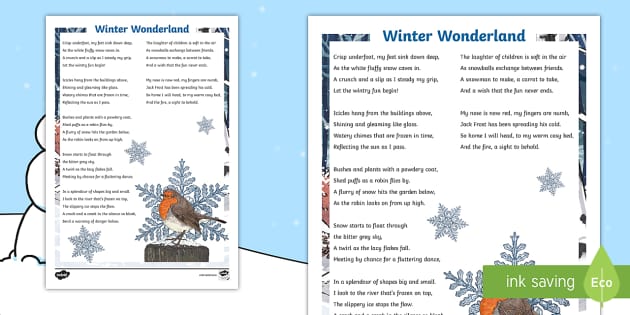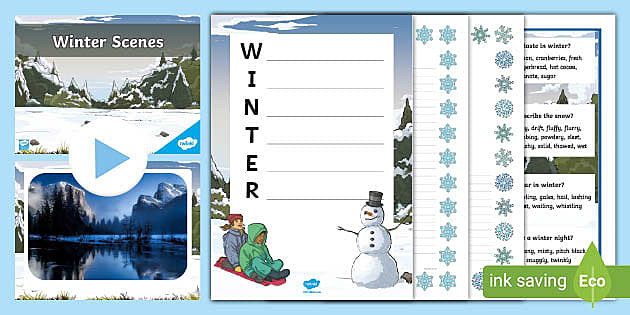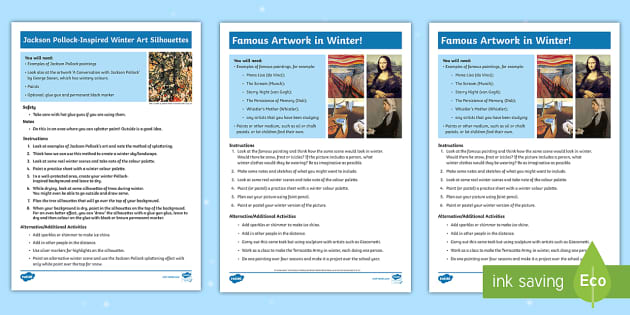



On Earth, the year is divided up into seasons, which are based on changes in weather and the number of daylight hours. The seasons are different in other parts of the world, but in the Northern Hemisphere, we recognise four different seasons: spring, summer, autumn and winter. But what is winter? Let’s learn a bit about the winter season.
Winter is the season that comes after autumn and before spring in the cycle of the seasons. Depending on where you live, it often brings with it colder weather and shorter days. And of course, you can’t forget the chance of snow!
Because it sits between autumn and spring, winter can be seen as the direct opposite of summer. That makes sense because while spring and autumn have equinoxes, summer and winter have solstices. But a bit more on that later!
Many changes can be observed in plants, as the deciduous trees grow barren. Animals great and small hibernate to stay warm and survive the cold weather.

Now that we’ve learnt a bit about the winter season, you may be wondering when it takes place.
In the Northern Hemisphere, winter officially takes place from December to March. This is according to the astronomical definition of the seasons. What this means is that a season lasts from the solstice to the equinox, or the equinox to the solstice.
But what does this mean? Let’s learn a little bit about the winter solstice, as this will help us to understand more about the winter season.
The winter solstice is a celestial event that takes place on December 21st or 22nd in the Northern Hemisphere, depending on where you live in the world.
It’s reversed for the Southern Hemisphere, so people who live there will experience their winter solstice in place of our summer solstice on June 20th or 21st.
The winter solstice is also known as the shortest day of the year. It occurs when the Sun is at the furthest point from that half of the world because of the way the Earth tilts.
In other words, it’s visible in the sky for the least amount of time, so we have less daylight and more nighttime.
Another name for the winter solstice is the hibernal solstice. Does that word sound familiar? Think of the word 'hibernate' – something that animals do during the winter season!
If you are teaching your students about winter in school, why not share some fun facts about the season? Find out if your pupils already know these facts and if they have any winter facts of their own!
Yes! You can also determine the beginning of winter by its meteorological start. This is based on what the weather is like on average during this time of the year.
The meteorological start of winter in the Northern Hemisphere is on December 1st, a whole 20 days earlier! It ends on March 1st, when spring begins.
This definition might align more closely with what people usually think of winter.

By now, we have quite a bit of knowledge about the winter season and when it takes place. But, as we mentioned previously, you can observe many seasonal changes during the winter season. These happen naturally to plants and animals with no human input. These biological processes allow other living things to adapt well to the colder temperatures and make sure that they survive.
What happens to plants in winter?
First, let’s learn about the winter season and how it impacts plant life. In the autumn, many trees will have their leaves turn brown, red, or orange. This happens when the chlorophyll is no longer needed, because there isn’t enough sunlight to photosynthesize (the way in which plants use sunlight, carbon dioxide and water to create energy for themselves). What you see is the leaves’ natural colour before they drop off through a lack of food.
Don’t worry, though. This doesn’t hurt the tree!
During winter, many of these trees will be barren. That means you can only see the trunk and the branches. It can give you a good view of any bird’s nests that would have been hidden during other months of the year.
Similar to trees, frost often withers away a flower's food source: their green leaves. This means that a lot of plants die off. However, during their growing season, they produce a lot of seeds that can survive the winter and sprout next year. These plants are called annuals.
Some small wildflowers and plants actually need winter to grow. If the bright sun or dry weather is too much for them, they may be better suited to near-freezing temperatures in December.
What happens to animals in winter?
Animals survive the winter in a number of ways. These include hibernation, migration, and physical adaptation.
What is winter migration?

Many birds and fish travel to a new location where they will be better protected from the cold temperatures and harsh weather. This is known as migration, and it happens because they can fly or swim across great distances during the autumn. The animals might not consciously realize that they’re doing this, as they’re biologically programmed to do it!
When the weather becomes habitable again, they’ll return.
What is hibernation?
In winter, there is little food left for animals to eat. This means that many species survive by conserving their energy through hibernation.
Before animals go into hibernation, they have to prepare. This happens during the autumn, as they collect a lot of food to eat and build up their energy storage.
As they enter hibernation, their heart begins to beat slower. Their body temperature cools to match the weather outside, keeping them somewhat protected. They try to use as little energy as possible during this process – hence the sleeping.

However, not all animals hibernate during the winter, and a great example of this is squirrels. Squirrels are active throughout the winter, digging up buried stores of food to keep them going throughout the cold winter. However, they may sometimes rest in their nests (called ‘dreys’) for a few days at a time, which is why people sometimes assume that they hibernate.
What is adaptation?
So, how does an animal that doesn’t migrate or hibernate survive the winter? The answer often lies in adaptation. This involves special features that these animals have which allow them to adapt to the cold weather. It might involve growing a thicker layer of fur, or even changing colour so that they’re camouflaged in the snow.
One example of these adaptations can be seen in seals. Seals have a thick layer of blubber on their bellies to keep them from freezing on the ice.
You can read more about physiological adaptations here.

We’ve learnt a lot about the winter season and the natural world, but what does winter mean to people? To many people, winter is a time of festivity, as it coincides with lots of important festivals and celebrations. Here are ten important holidays that happen while it’s winter in the Northern Hemisphere:
As the weather grows chilly, and as the temperatures begin to drop, you’ll find a ton of fun teaching opportunities start to show up, inside and outside the classroom. Why don’t you use some of our fantastic resources to teach pupils about the winter season?
These are teacher-made, so you can rest assured that they’re accurate, engaging, and educational. What’s more is that they’re designed to save you valuable time in class. Click on the images (or our handy links) to go directly to the page where you can download the activity!

This lovely rhyming poem is a great way to celebrate the arrival of winter. Together with your pupils, you can read through it, making note of how metaphors or certain words are used to bring the winter theme to life.

Featuring an array of lovely materials including a winter scenes PowerPoint, some writing sheets and even an acrostic poem template, this pack has everything you need to inspire pupils and get them writing some lovely, winter-themed poems or stories.

Lastly, why not let your children get creative with this wonderful set of three winter-themed art activities? Pupils can take inspiration from great artists as they create their own unique art pieces.